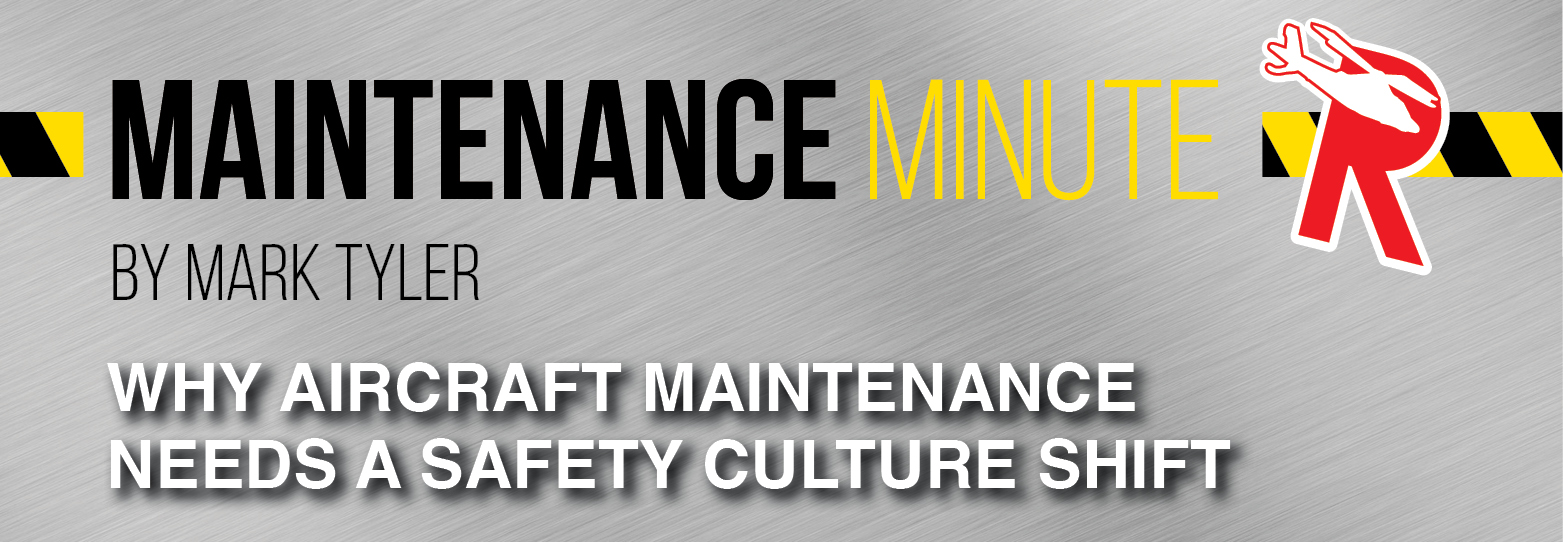|
Jul
07
2025
|
|
Posted 178 days ago ago by Admin
|
|

By Mark Tyler
Not long ago, one of our aircraft mechanics had a close call. While working on a helicopter from an elevated platform ladder, he shifted his weight—and the ladder flipped. He fell inside the frame and struck his head on a side brace, requiring 17 stitches.
Had he fallen just inches differently and hit the concrete floor, we’d be having a very different conversation.
In a profession where risk is ever-present and precision is our priority, this incident served as a sharp reminder: safety isn’t just about the aircraft—it’s about the people who maintain them.
According to OSHA, severe injuries among aircraft mechanics in the U.S. doubled in 2022. Falls—especially from ladders, platforms, and aircraft structures—are among the leading causes. The consequences can be life-altering: fractures, concussions, amputations. Yet despite the risk, most maintenance technicians aren’t required to wear protective headgear unless performing a specific task that calls for it.
That’s a gap in our safety culture—and it’s time to close it.
No one wants to work in a bubble-wrapped environment, but common-sense safety should never feel optional. We use protective eyewear, gloves, and hearing protection, depending on the job. So, why don’t we wear helmets when working at height or beneath rotors?
Some of it comes down to culture: habits, resistance to change, or a false sense of control. But we must be willing to lead a mindset shift. A lightweight safety helmet may feel like an inconvenience—until the day it saves a life.
Let’s be honest: the cost of prevention is far less than the cost of recovery.
Beyond the immediate medical attention, an injury like the one our mechanic experienced could result in time away from work, temporary staffing adjustments, and workers' compensation claims. Over time, these claims can lead to increased insurance premiums and OSHA reporting burdens. But the real cost is harder to quantify: the mental and emotional toll on the injured technician, their family, and the morale of the team around them.
A near miss is a gift. It exposes the deficiencies—usually without the full consequence. It’s an opportunity to learn, and we do better when we know better.
At our facility, safety training currently includes fire-extinguisher usage, CPR, and defibrillator response. We’re in the process of adding basic first aid as well. These aren’t just check-the-box training—they’re life-saving skills that we hope we never have to use, but absolutely must be ready for.
As leaders, we’re not just responsible for the output of our people—we’re responsible for their well-being. We can’t control every variable, but we can set expectations, invest in equipment, and model safety-first behavior.
The takeaway is simple: helmets aren’t just for pilots. In aircraft maintenance, we need to protect the heads—and the lives—of the hands that keep us flying.
READ MORE ROTOR PRO: https://justhelicopters.com/Magazine
WATCH ROTOR PRO YOUTUBE CHANNEL: https://buff.ly/3Md0T3y
You can also find us on
Instagram - https://www.instagram.com/rotorpro1
Facebook - https://www.facebook.com/rotorpro1
Twitter - https://twitter.com/justhelicopters
LinkedIn - https://www.linkedin.com/company/rotorpro1